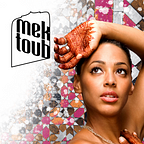Roe and Henna and Women
Kenzi here. I’m writing this the day after the US Supreme Court overturned Roe v Wade guaranteeing a woman’s right to an abortion. So many thoughts are swimming in my head, none of them very cheery. And that’s from the perspective of a white American woman past her childbearing years. My fear and sadness are not for me; I was lucky to be born when contraception was widely available and abortion was legal. I was sexual when the AIDS crisis hit so me and my partners were fully educated on the need for condoms. Today I think of my ancestors who weren’t so lucky and imagine their lives without these choices. And I think of others in my country and around the world who aren’t as lucky as I was. My emotions are at the forefront and I don’t have a logical thought or plan right now; I’m just going to be sad and angry for now. But as this is a henna blog, let’s take a little detour and talk a bit about henna and its role in Moroccan women’s lives, as a tool for empowerment.
Wherever and whenever your ancestors lived, women found ways to protect themselves and each other, knowing that their power was limited and also feared by others. These days we fight for equal rights and run for office and make huge strides but we still have whisper networks and support structures outside the mainstream; we are there for each other. In my research about henna in Morocco I was delighted to discover that henna plays a big role in women’s lives, not just as an adornment and cultural norm, but also as a tool for protection and empowerment. Henna is thought to contain baraka, a kind of blessedness or luck, but much more than that. Baraka can protect you and help you, it can put your soul at ease. Baraka can be gained and lost, and even inherited. Just a smear of henna on your palm is enough to impart the blessedness of the henna. My Moroccan aunt-in-law (is that a thing?) LOVED henna, and would apply it whenever she could, sometimes a full palm and fingertips, sometimes designs all over her hands and feet. And she always did henna before she travelled to protect her during her journey. Often when someone visits you, it is expected that you will offer them henna before they go back home, and you hire a henna artist for a little party.
If you know anything about henna, you know that many cultures — including Morocco — include henna in wedding ceremonies. In Morocco, the bride is hennaed before her wedding, full hands and feet. While it may seem like a part of the bridal adornment, it’s not just a pretty thing to complement the outfits or the jewelry, but rather a potent agent of protection for the bride in this transitional period of her life. Back in the day, when a girl married she left her parent’s home and/or village to live in her husband’s home or village, possibly with his parents. Clearly this was a time of great change and uncertainty for the girl so everything that could be done to protect her had to be done. Henna was a big part of that protection.
As protection against the evil eye there is nothing better than henna. A bride, on her wedding day, is the focal point and thus a target for envy from which she needs to be protected. Envy brings the evil eye, even if the envy is not intended. And some do very much intend and wish evil upon the bride. The henna itself, even a smear will protect her, but if designs are drawn they are symbols that protect her, confuse the demons, and direct the evil away to the 4 corners of the earth. Even the henna that is left over after hennaing the bride is closely guarded, used to adorn the women in the family or friends of the bride so they may gain baraka from the bride’s henna. And when the dried henna is scraped off it is mixed with water and used to water the garden, but also guarded so it doesn’t fall into the wrong hands to be used for magic against her.
I could write volumes on this topic, as every tribe and village has their own traditions around weddings, traditions that have evolved over time. The designs have also evolved over time, as new tools were used to do henna, and now, as the internet spreads different design inspiration from all over the world. I will write more about this topic in greater detail but today, it has felt healing to think about women throughout the ages protecting and empowering themselves and each other. We haven’t lost that power.
